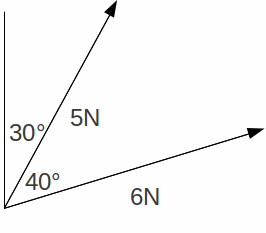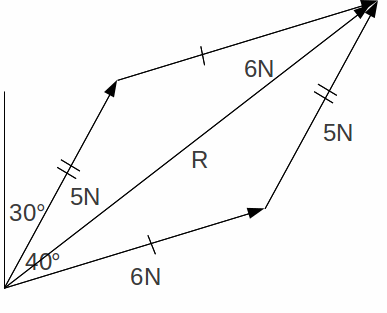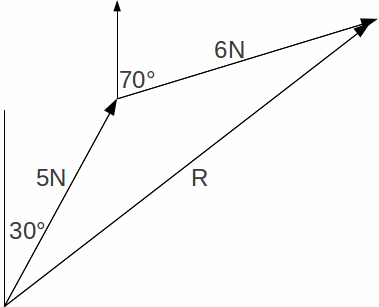The resultant of two or more forces – both magnitude and direction – can be found by representing each force as a vector on a scale diagram, with the length of the vector proportional to the magnitude of the force, and with the vector pointing in the direction of the force. The forces are joined end to end and the distance from the start of the first to the end of the last will be the magnitude of the resultant. The angle the resultant makes with the horizontal or vertical can be found by measurement or calculation.
This method is used most easily for finding the resultant of two forces. We construct a triangle or parallelogram. If a parallelogram is constructed, the resultant is one of the diagonals.
Suppose we want to find the resultant of two forces acting at a point. A fiorce of 5N acts at an angle of 30° to the vertical and a force of 6N acts at 70° to the vertical.

We can construct a parallelogram by making a side parallel to the 6N force (and of the same length) following the 5N force and a side parallel to the 5N force (and of the same length) following on from the 5N force. We obtain the diagram below.

The diagonal labelled R is the resultant of the two forces. In fact, we don't need a parallelogram A triangle will do.

Measuring R on a scaled diagram will gives R=10.3N and measuring the angle to the vertical will give 52°.
